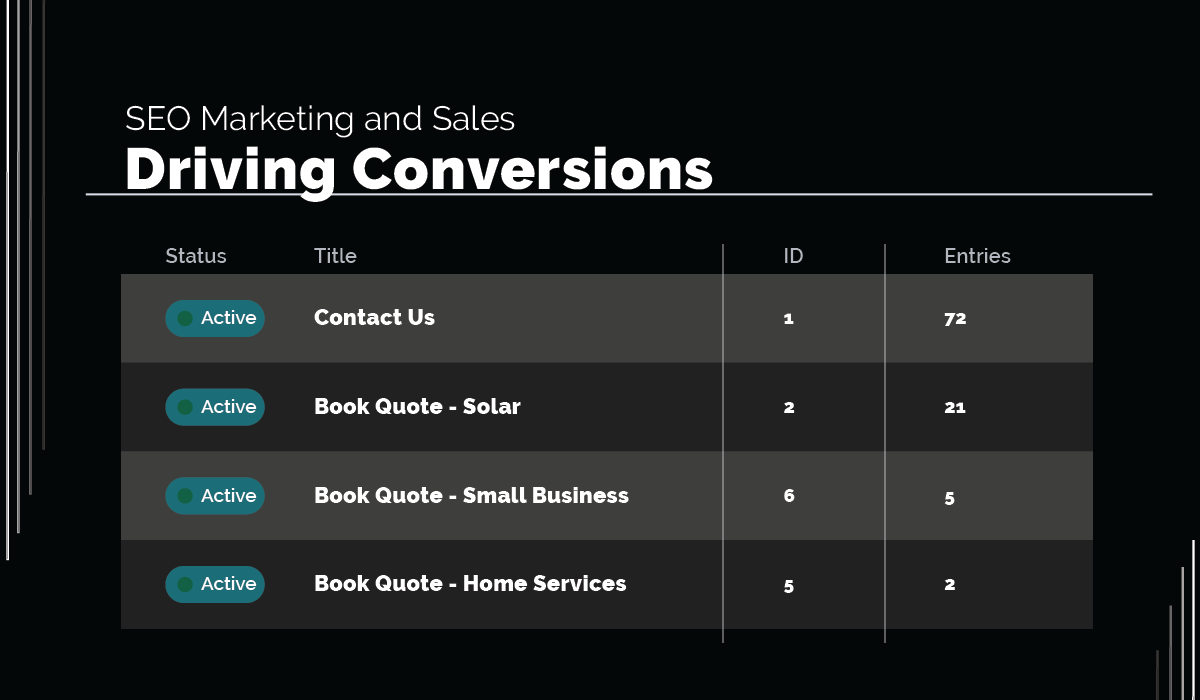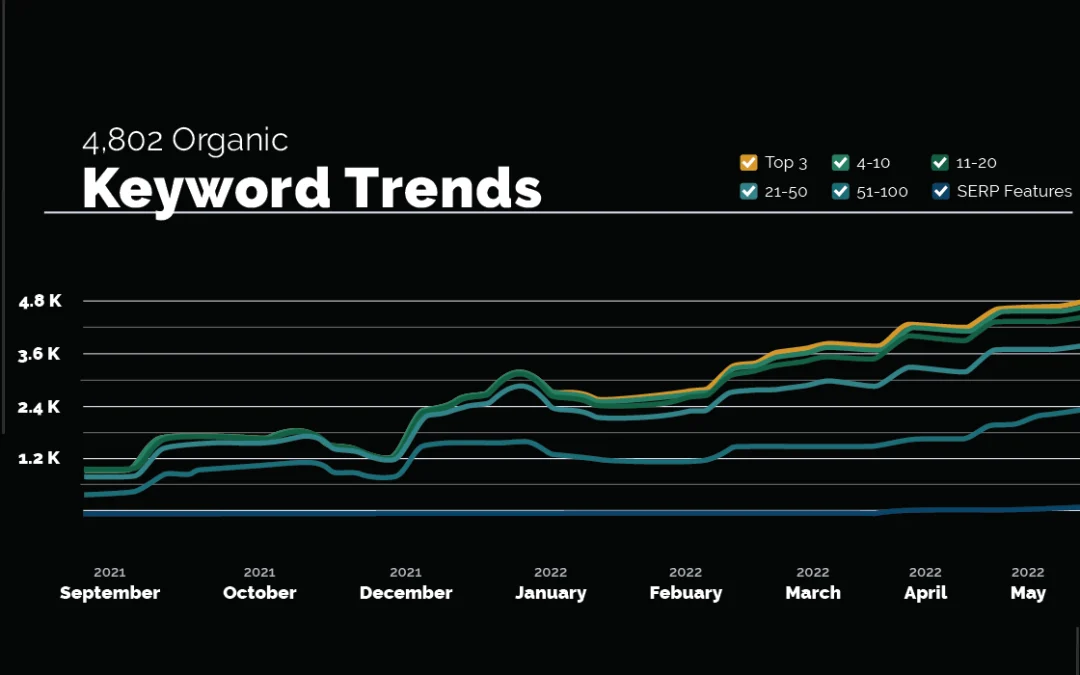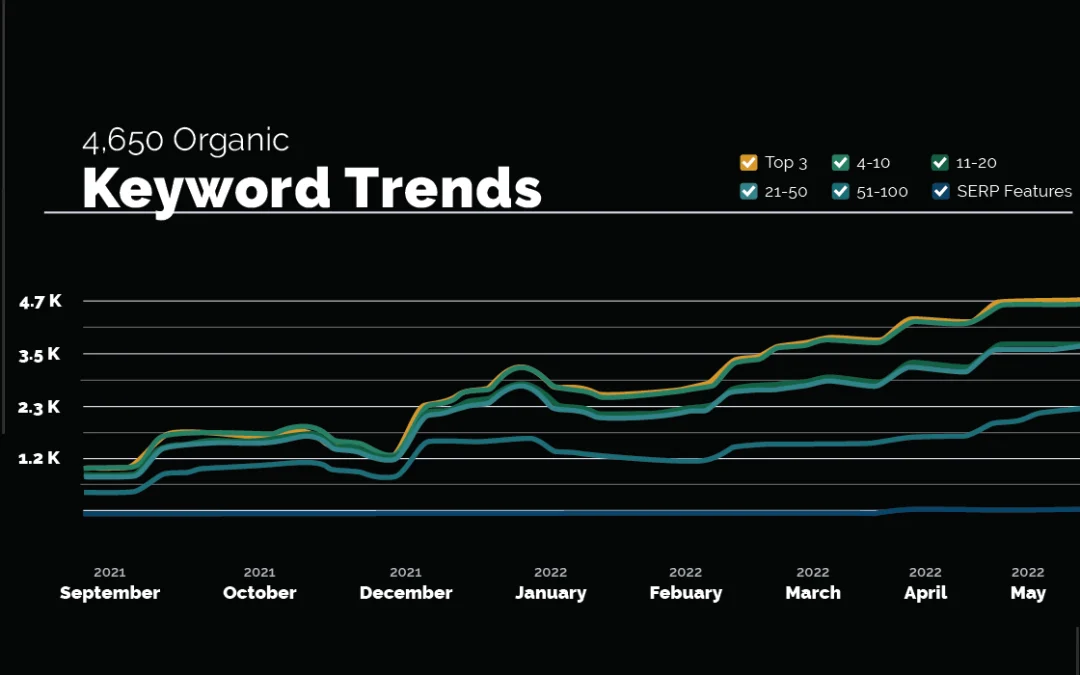Summary
- Top-of-funnel SEO content includes blogs, videos, and infographics that are engaging and demonstrate brand authority. Focus on strong UX to reduce bounce rates while optimizing for informational & discovery keywords.
- Middle-of-the-funnel SEO should enhance visibility and UX of product and service pages with custom descriptions focusing on benefits. Comparison and evaluation keywords are most useful here.
- Bottom-of-the-funnel content should use transactional keywords and compelling CTAs to gain commitments from buyers who are one step away from making a decision.
- Technical SEO, content marketing, link building, and leveraging data to create personalized content will also help reach users at different stages of the funnel. Make sure your sales team is aligned with these goals and practices so that they can use the right information for buyers in different stages.
- SEO can be complex, so professional support can be the most cost-effective way to determine what needs improvement and choose strategies that lead to meaningful results. Contact Monochrome Marketing to consult with one of our SEO specialists about the right approach for your business.
SEO makes your website and digital content visible in search engines—but when you apply it correctly, it can also do much more. In fact, correctly integrating SEO into your marketing and sales funnel can give your conversions a direct boost by removing friction from the experience of potential customers and encouraging them to purchase or take other valuable actions.
In this article, our team at Monochrome Marketing breaks down the different stages of the funnel and provides actionable SEO tips for each one. We’ll also show you the direct impacts these can have on conversions so that you can start improving the return on investment for your SEO efforts immediately.
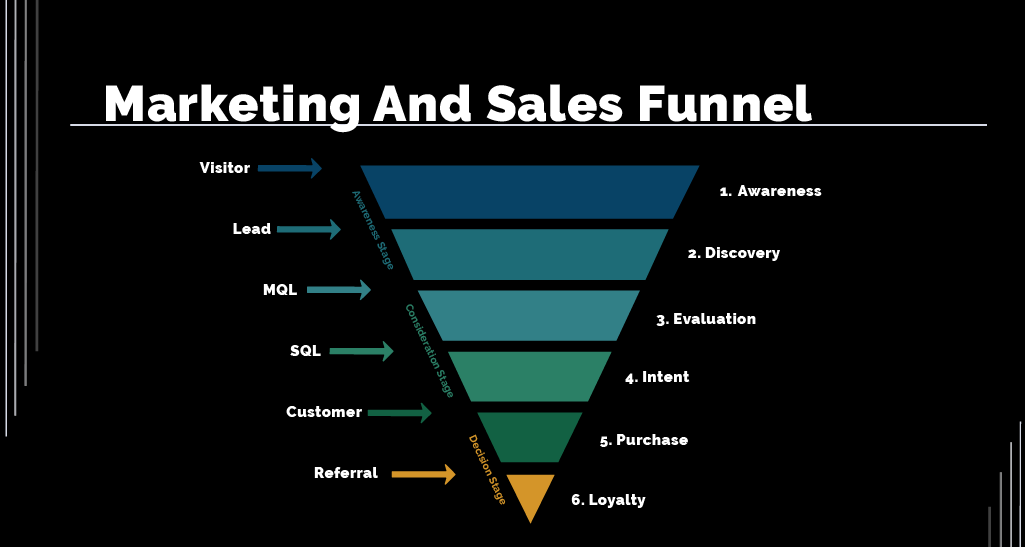
1. Top of the Funnel (Awareness Stage)
Top-of-funnel customers are in the awareness stage—they’re looking for information that can help them solve a problem or answer a question, and your brand is just appearing on their radar. What they find when they click on your content needs to demonstrate that you’re a credible authority who can help them.
Making “First Impression” Content
The blogs, videos, and infographics you create to capture the attention of visitors at this stage is what we like to call “first impression” content—it needs to be attractive, engaging, and offer real value to the user.
UX, which is an increasingly important ranking factor for search engines, is the key here. strong UX reduces your bounce rate, which means two things:
- Users will spend more time on your page, giving you a chance to draw them further into your funnel, and…
- Search engine algorithms will rank your content higher, allowing more visitors in the awareness stage to see it.
Improve UX on blogs, videos, and infographics by:
- Compressing images and video to make them load more quickly.
- Using a layout or content hierarchy that positions the most urgent and actionable information first, with supporting details or supplementary information coming afterward.
- Keeping text blocks lean and mean. Written content should efficiently communicate useful information that brings the user closer to solving the problem or answering the question that prompted them to run a search in the first place.
Choosing Appropriate Keywords: Informational & Discovery
Content created for your top-of-funnel users should focus on relevant informational and discovery keywords. Here’s what that means:
- Informational keywords are used when a searcher is looking for general information. These keywords are generally focused on solving a problem, answering a question, or learning about a specific topic. Let’s say you run a roofing and exteriors company in Alberta. Informational keywords to target for your top-of-funnel users might include:
- “How to prevent roof leaks”
- “Benefits of architectural shingles”
- Discovery keywords are used by searchers who are looking for companies, products, or services, but may not yet be aware of your brand. Using the same example of an Alberta roofing and exteriors company, here are some discovery keywords you might consider:
- “Residential roofing near me”
- “Roof repair in Alberta”
Note that the above keywords are also location-specific—if your business serves a particular physical region, you’ll want to optimize your “first impression” content for local SEO and help capture the attention of the people most likely to eventually buy from you.
Optimizing for Local SEO
Local SEO makes you more visible to people who are searching for products, services, or companies like yours within the specific geographic area you serve. We’ve already covered making your discovery keywords location-specific, but here are some other ways to use local SEO to stand out when creating content for the top of your funnel:
- Optimize your Google My Business listing: Improve your local search visibility by ensuring your Google My Business profile has accurate business hours, categories, and high-quality images.
- Gather local reviews: Encourage satisfied local customers to leave positive reviews on Google and other review platforms to boost your credibility and trustworthiness to other new visitors.
- Keep your contact information consistent: Make sure your name, address, and phone number are identical across all online platforms and directories to improve local search rankings.
- Include local keywords in meta descriptions: Putting geographically specific keywords in your meta descriptions helps attract local users searching for relevant products or services.
- Acquire local backlinks: Build relationships with local businesses and media outlets to secure backlinks, enhancing your site’s local authority.
2. Middle of the Funnel (Consideration Stage)
This is the stage of your funnel where users go from being visitors to potential customers. At this stage, they’re already aware of your brand and are considering whether to make a purchase.
The most important use for SEO in this part of the funnel is to enhance the visibility and UX of your product or service pages. SEO-optimized product and service pages get more views from potential customers and are far more likely to move them into the decision phase—the one where they’re ready to buy.
Writing Custom Descriptions
The content on your product and service pages needs to be original, useful, and compelling. Try the following to make specs, descriptions, and flavour text pop:
- Use Benefit-Focused Language: Highlight the advantages of your product or service to show how it solves a problem or improves the customer’s life. This resonates more with potential customers.
- Feature Social Proof: Build credibility and trust by showing real customer experiences via reviews and testimonials. This can help potential customers feel more secure in choosing your product or service. For best results, place social proof near the top of the content hierarchy on these pages, since user-generated content is often the most effective for moving people towards taking action.
- Add FAQs: Address common questions or concerns potential customers might have, making it easier for them to arrive at a decision. Keep these short, sweet, and focused on what potential customers care about—for example, how much does the product or service cost, how long does it take to deliver or install, and what problems does it help solve?
Choosing Appropriate Keywords: Comparison & Evaluation
Your product and service pages should use different keywords than your “first impression” content. Try focusing on comparison and evaluation keywords instead.
- Comparison keywords are search terms that people use when they are weighing different products, services, or solutions against each other. These keywords often include terms like “vs,” “or,” “comparison,” and “best.” Examples might include:
- “Three-tab vs. architectural shingles”
- “Hardie board vs. stucco siding”
- Evaluation keywords are used when consumers are assessing the quality, features, and benefits of a specific product or service. These keywords often include terms like “review,” “features,” “pros and cons,” and “benefits.” For example:
- “Benefits of architectural shingles”
- “Leaf-free gutter guard features”
3. Bottom of the Funnel (Decision Stage)
SEO at the bottom of the funnel focuses on encouraging conversions and purchases. By this point, prospects are ready to buy; they just need that final nudge.
Optimizing for transactional keywords and crafting effective CTAs can help users find the content that compels them to complete purchases. Here’s how:
Using Transactional Keywords
Transactional keywords are search terms that indicate a strong intent to buy. They typically include terms like “buy,” “price,” “deal,” and “purchase.” By optimizing your product and checkout pages with these keywords, you cater directly to users who are ready to buy.
- For our Alberta roofing and exteriors company, transactional keywords might look like:
- “Buy architectural shingles in Alberta”
- “Roof repair deals in Alberta”
Crafting CTAs that Convert
After engaging with your content, users need a clear, compelling next step to follow. The right CTAs are specific and offer a straightforward path to the action you want the user to take—like “Get a Free Quote,” “Shop Now,” or “Contact Us Today”.
Don’t Forget Local SEO
Local SEO is still important at the bottom of the funnel, so don’t forget about it! User-generated content, like reviews, can be especially influential at this stage. A recent positive review can tip the scales for a potential customer who’s on the fence about making a purchase.
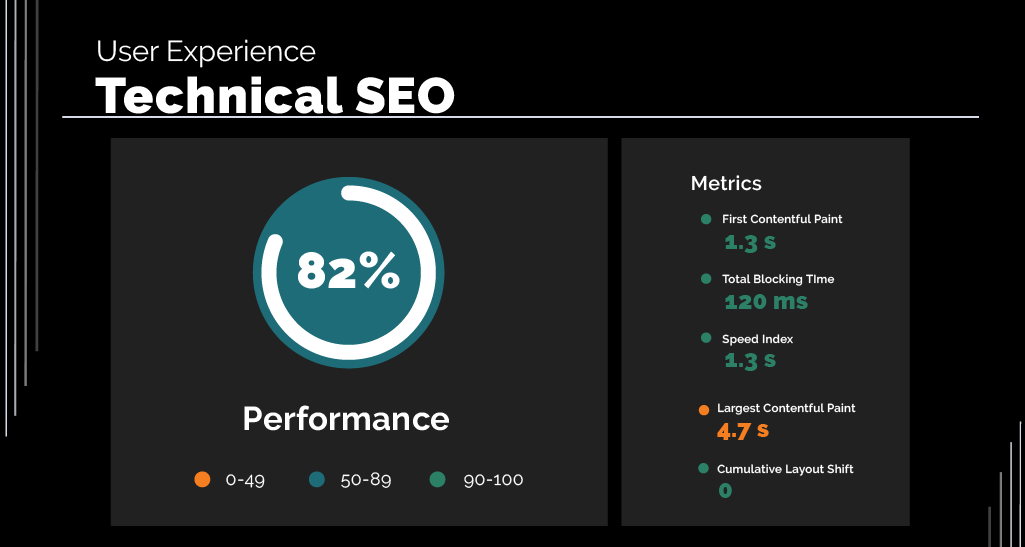
4. Technical SEO for User Experience
In addition to keywords and content, technical SEO ensures that your website functions smoothly and removes friction for potential customers, allowing them to progress through the sales funnel more efficiently.
Technical SEO encompasses the behind-the-scenes aspects of your website that make it easier for search engines to crawl and index your content—but more importantly, it also supports user experience. No matter how good your content is, users will leave if your website is slow or difficult to navigate.
Areas to Focus on for Technical SEO
Technical SEO can be a deep and dark rabbit hole to venture down—but here are a few areas you can focus on improving right now:
- Fast-Loading Pages: In today’s fast-paced digital landscape, users expect pages to load quickly. Slow-loading pages lead to high bounce rates, losing potential customers.
- Mobile Responsiveness: With most users browsing and shopping on mobile devices, having a mobile-responsive website is no longer optional. It ensures that users have a consistent experience, regardless of the device they’re using.
- Easy Navigation: A well-structured website with intuitive navigation guides users effortlessly through their buying journey, leading to more conversions.
Consider a Technical SEO Audit
Since technical SEO is often complex, professional audits are an important way to ensure that your website is operating at peak performance. These audits can uncover issues like broken links, duplicate content, or slow page load times. Once identified, you can take corrective measures to address these issues, ensuring that both search engines and users find your website easy to access and navigate.
By integrating robust technical SEO practices, you not only enhance user experience but also ensure your website remains in prime condition to serve and convert potential customers. When you work with Monochrome Marketing, our team conducts an SEO audit for your business at the front end to identify areas for improvement and run targeted campaigns that lead to measurable results.
5. Content Marketing & Link-Building for Authority
Content marketing and strategic link-building serve as the foundation for establishing brand authority and trust in your domain. They work together to provide users with valuable information and show search engines that your website is reputable and reliable.
Creating Value-Driven Content
Quality content addresses user needs and positions your brand as an industry expert. When you consistently produce insightful, actionable, and relevant content, you’re signaling to both users and search engines that you’re a trusted resource in your field.
Acquiring Quality Backlinks
Backlinks act as votes of confidence in your site from others who already have established authority in your niche. This improves search engine rankings but also encourages users to associate your brand with other trusted organizations. Here are some tips for getting better backlinks:
- Guest Posting: Collaborate with reputable websites in your industry and offer to provide valuable content in exchange for a backlink.
- Skyscraper Technique: Identify top-performing content in your niche, create an even better version, and then reach out to sites linking to the original content.
- Engage in Communities: Be active in forums, blogs, or social media groups related to your industry and offer insightful comments and advice—this can create relationships that lead to backlinks naturally.
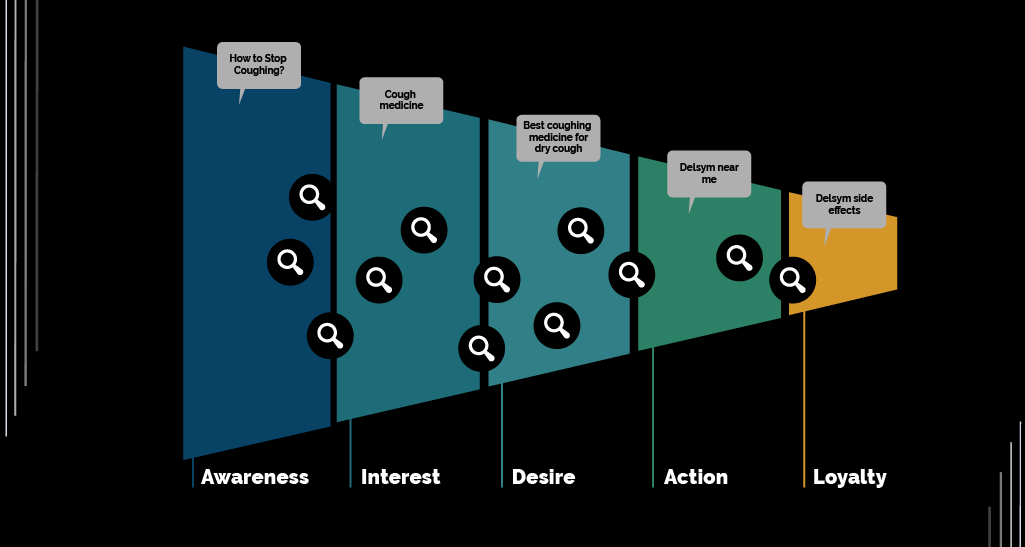
6. Personalization & User Journey Mapping
Personalized experiences cater directly to individual user preferences, increasing both engagement and conversions. By personalizing content, you show users that you understand their needs and slowly gain their trust.
User Journey Mapping
User journey mapping is a visual representation of the steps a user takes from their initial interaction with your brand to their eventual conversion. Mapping this journey gives you a better idea of how customers interact with your content throughout their buying process so you can create SEO strategies that resonate with users at every funnel stage.
Using Data to Understand Your Users
Of course, having a plan is only as good as the data it’s based on. Here are some tips on collecting information that helps you map your users’ journeys and personalize their experiences:
- Behaviour Analytics: Use tools like Google Analytics to understand user behaviour, such as which pages they visit most and where they drop off.
- A/B Testing: Test different versions of a page or content element to determine which performs best in terms of user engagement and conversions.
- Feedback Collection: Use surveys or feedback tools to gather direct input from users about their experiences and preferences.
See Also: Metrics to Track for SEO Success & How to Action the Data
7. Tracking & Analyzing Funnel Performance
For the clearest picture of how your SEO efforts are paying off, you’ll also want to measure how users move through your funnel. This insight will allow for targeted improvements at every stage.
Tools & Techniques for Better Tracking
- Set up goal tracking in Google Analytics to monitor specific conversion events.
- Use heatmaps to identify high-engagement areas or points of drop-off.
- Conduct regular A/B tests to identify the most effective content and design elements.
8. Aligning SEO & Sales Teams
Finally, it’s critical to make sure your sales team is in the loop about your SEO practices. This helps them understand what information potential customers see at every step of their buyer’s journey and helps them craft messaging that encourages purchases.
Quick Steps for Synchronising Sales & SEO
- Integrate your CRM with your analytics tools to see the full journey of converted leads.
- Train sales teams on SEO insights, and vice versa, to foster a holistic approach to lead generation and conversion.
- Organize monthly brainstorming sessions between your SEO and sales teams to discuss insights and refine strategies.
Helping Your SEO Pay for Itself
Visibility can be hard to put a dollar value on, but conversions aren’t. When your SEO efforts are targeted to help drive sales, they produce a clear and measurable return on your investment and give you confidence in the way you’re continuing to grow your business.
Implementing, analyzing, and consistently refining your SEO strategy takes work—but when you integrate it with your marketing and sales, the results literally pay off. To get expert help making your SEO work for you, contact the Monochrome team and consult with one of our specialists who can help you create a custom growth plan for your business.

